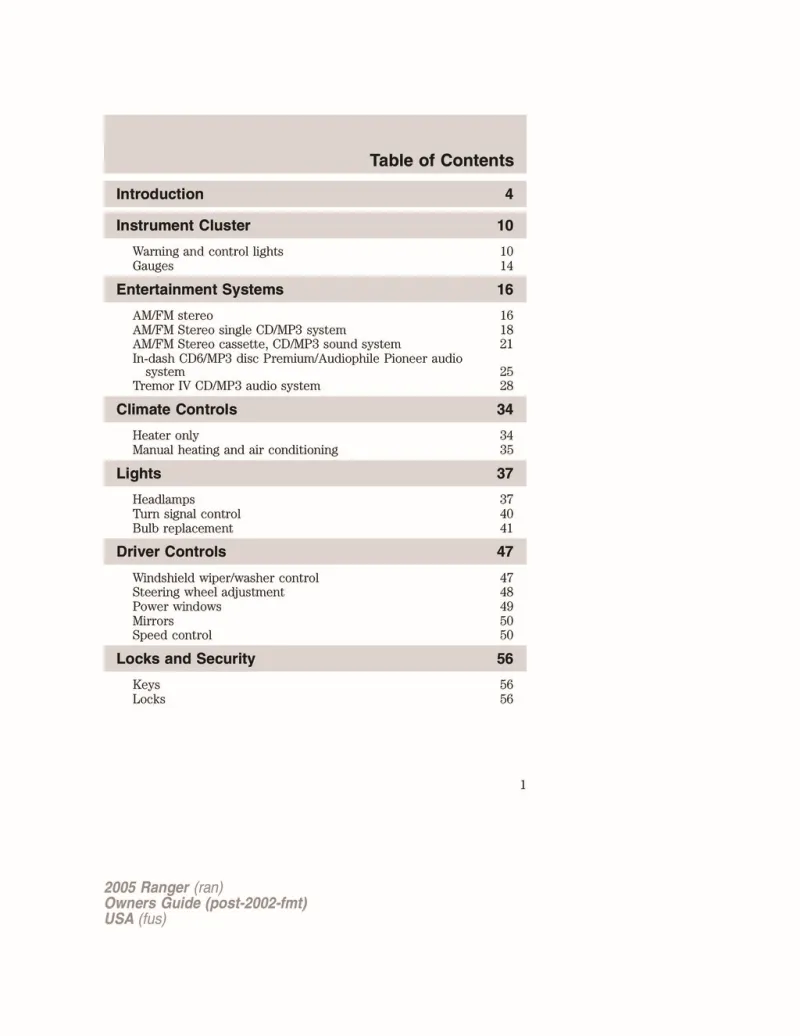2005 Ford Ranger Owner's Manual

Table of Contents
2005 Ford Ranger Overview
Introduction
The 2005 Ford Ranger exemplifies the classic charm and rugged performance associated with Ford's compact pickup line. As a versatile vehicle, it caters to both the working professional and the outdoor enthusiast, merging utility with comfort. With its robust build and practical designs, the Ranger is the perfect companion for those seeking a reliable vehicle capable of handling various tasks while delivering a smooth driving experience.
Powertrains
The 2005 Ford Ranger comes with two engine options designed to meet a range of needs. The base model is equipped with a 2.3-liter inline-4 engine, producing 143 horsepower and 154 lb-ft of torque. For those requiring a little more power, the range-topping 4.0-liter V6 provides a robust 207 horsepower and 238 lb-ft of torque, making it ideal for hauling or towing. Both engines are mated to either a 5-speed manual or a 5-speed automatic transmission, offering smooth and efficient gear changes.
Trims
Features
Standard features in the 2005 Ford Ranger include air conditioning, a sound system with AM/FM radio, and a practical bed design. Higher trims offer additional conveniences such as power windows and locks, upgraded audio systems, and stylish alloy wheels. Safety features like dual front airbags and optional anti-lock brakes enhance the Ranger's reputation as a reliable and responsible choice for drivers.
Owners Manual
The owner's manual for the 2005 Ford Ranger is an essential resource for maximizing the vehicle's features and capabilities. It includes comprehensive information on routine maintenance schedules, troubleshooting common issues, and ensuring optimal performance. The manual serves as a guide for owners to understand their vehicle better, ensuring longevity and dependable service throughout the years.
User manual download
The Ford Ranger owner manual for the 2005 model year is to be found in PDF downloadable format on this page. The owner manual for the model year 2005 is free and in English, but the repair manuals are usually not easy to get and may cost more.
Manual Questions
Fill the form below and someone will help you!

